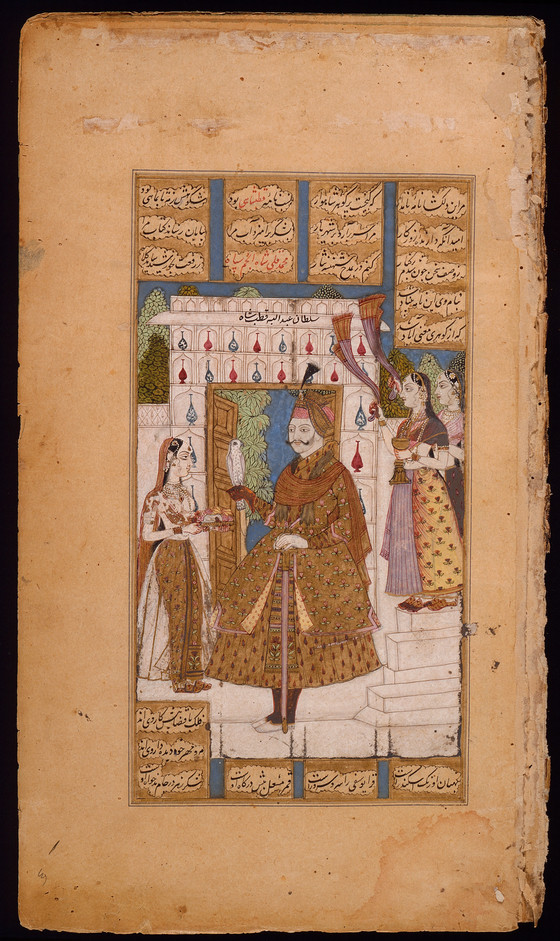Sultan Abdullah Qutb Shah (r. 1626-1672), Folio from an Illuminated Manuscript of the History of the Qutb Shahi Sultans of Golconda and Hyderabad

Please log in to add this item to your gallery.
View comments
No comments have been posted yet.
Add a comment
Please log in to add comments.
Please log in to add tags.
* Nearly 20,000 images of artworks the museum believes to be in the public domain are available to download on this site.
Other images may be protected by copyright and other intellectual property rights.
By using any of these images you agree to LACMA's Terms of Use.
Sultan Abdullah Qutb Shah (r. 1626-1672), Folio from an Illuminated Manuscript of the History of the Qutb Shahi Sultans of Golconda and Hyderabad
India, Telegana, Hyderabad, manuscript dated 1610-1611; illustrations: circa 1700
Manuscripts
Opaque watercolor, gold, and ink on paper
Sheet: 12 1/2 × 7 1/8 in. (31.75 × 18.1 cm)
Panel (Text): 8 7/8 × 4 1/2 in. (22.54 × 11.43 cm)
Anonymous gift (M.89.159.4e)
Not currently on public view


